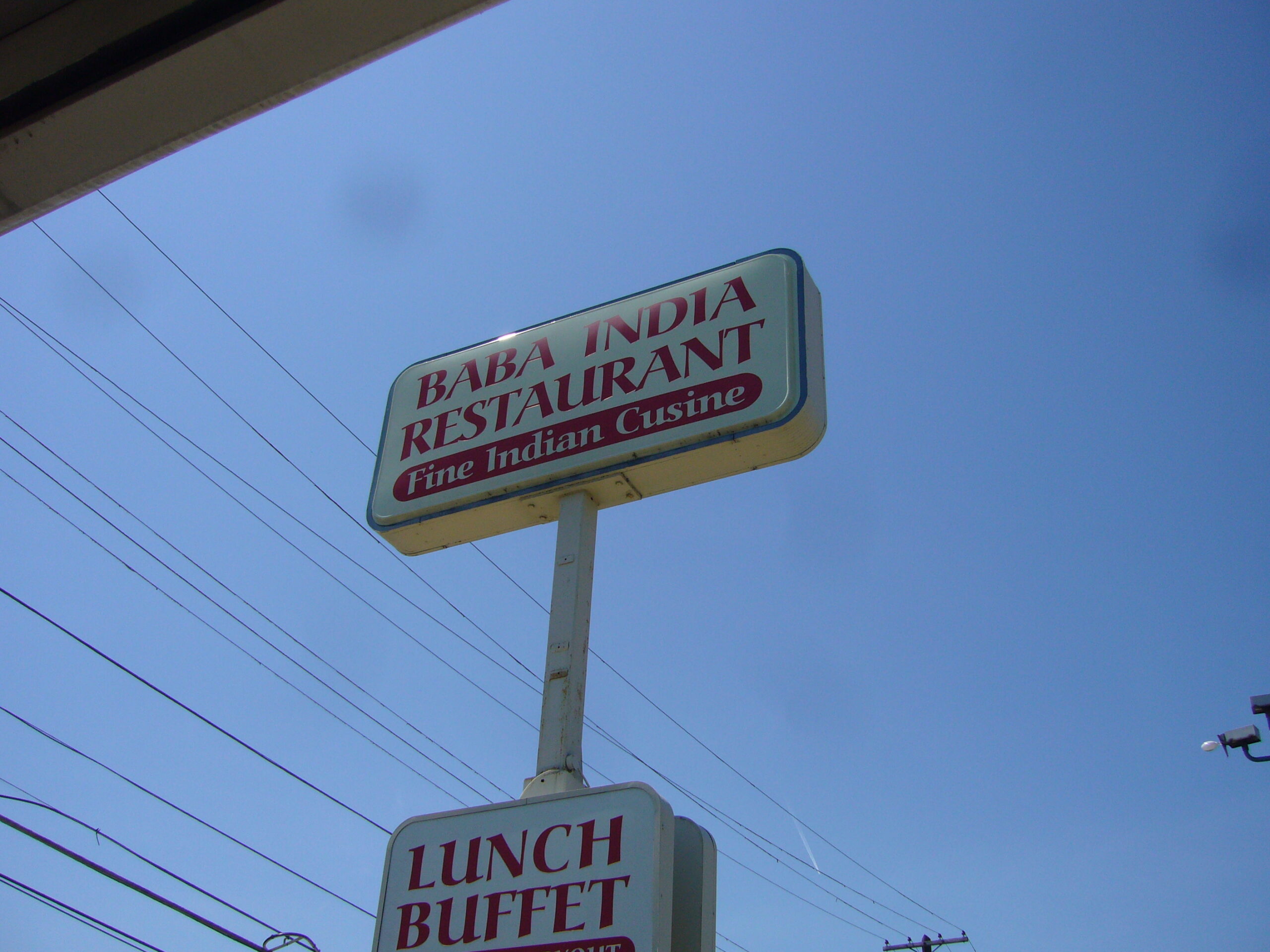
As with beauty, exotic cuisine is in the eye of the beholder, in addition to the taste buds of one’s palate. The folks at Baba India in Oakley characterize their food offerings as “exotic cuisine” on their menu. My sense is that Indian eats fit their claim in several categories. For instance, tandoori chicken features a reddish pink coloration. Exotic, don’t you think? So, what’s that all about?
The answer is in the marinade, which may include turmeric, which is burnt orange in color in its powdered state. More on that in a bit. Or the coloring may be from a chili powder and dhegi mirch (paprika) mixture, and other spice combinations as well — depends on the kitchen involved. Or a third possibility: at lower end Indian restaurants not in Baba India’s league, the source can be red food coloring, according to foodie sources devoted to parsing Indian cuisine.
Then there is the cooking process — the tandoori oven — which literally bakes the color into the chicken. Hence, probably natural coloration that looks oddly unnatural on one’s plate.

The tandoori oven is made of clay and is cylindrical in shape, likened to a chimney. The chamber creates a marvelous roasting environment for items such as chicken, veggies, fish and other meats. To roast, the item is placed on a skewer, which is placed point down at the bottom of the cylinder, with the top of the skewer leaning on the side of the oven. In simple terms, the chicken is suspended in the oven, allowing the heat to surround the meat and cook it quickly.
The oven and cooking process have been around a while. They date back to 3000 BCE, and to the Harappan civilization in the Indus Valley. Archeologists have found ovens dating back that far, also having found chicken bones, charred from the baking process, in proximity to the ovens. In India this historical lineage manifests itself most in the Punjab region of the country. That northern region of the sprawling nation is where the foods of Baba India are most often found.
For Jewish diners-out, the cuisine you’ll find at Baba India features influences of cultures found in the Middle East and Eastern Europe as well. The specialties of the cuisine tend to be oriented to vegetables with taste profiles suited to the European palate. But remember that the diner can ask for the spice profile of his or her liking, from mild to extremely hot. Among the vegetarian options at Baba India are: saag paneer and NAV rattan korma, which are favorites of diners, according to management.
Saag paneer is one of my favorites for sure. On this menu, the dish features homemade cheese cubes that are cooked with spinach and fresh cream. Generally, this entrée is a mild dish, without the hot spiciness that flavors some Indian foods. Almost always, you will find the saag paneer on luncheon buffets of the type found at Baba India.
NAV rattan korma is a medley of vegetables to which cashews and light cream are added. This dish may vary in its makeup, depending on the vegetables available in the kitchen of the preparer. The entrée is a natural precisely because of the Punjab area of its origin. That part of India is the breadbasket of the nation. The Punjab primarily is farmland that produces a cornucopia of vegetables, including baby eggplant, squash, spinach, potatoes, okra and other vegetables indigenous to India.
The food of this region tends to be richer in content, with more cream and butter used in its preparation. In the south of India, one finds more fish and lamb, and the cooking medium is coconut-based. Hence, more curries and hot spicy dishes. But Jewish diners will find all the heat they can handle in the vindaloo dishes of the Baba India menu.
Beside veggies, there are chicken, lamb, fish and rice specialties. Jewish diners may wish to try the chicken tikka masala or the chicken jalfrezi. The first dish features broiled chicken, which is further cooked in a savory tomato sauce with peppers and onions. Very flavorful! The second features a piquant sauce of orange-red color that delivers a time-released spiciness. Jalfrezi will sneak up on you in the spiciness department, so be forewarned. The way to eat this chicken specialty is with some garlic naan (Indian tandoori-baked bread) to sop up the sauces. Very flavorful as well.

A plate of Indian specialty items
As mentioned above, turmeric is a spice used extensively in Indian cooking. The spice adds color and special flavor to many dishes, certainly, but scientists are adding another benefit to this spice — brain health. A fact is that there is almost no dementia or Alzheimer’s disease in the native Indian population. Why is that? The scientific community has narrowed it down to the properties in the spice turmeric. Native Indians use that spice in much of what they cook and eat. And seemingly, the brain health of the nation is derived from that spice. Also, the food tastes good with turmeric as a flavoring agent. So why not indulge?
See you at Baba India!





